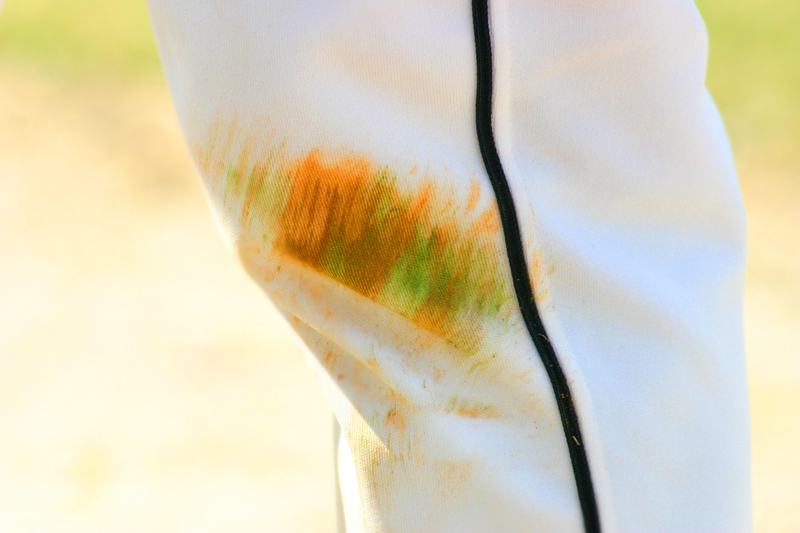Conquer the Grease: Mastering the Art of Cleaning Enamel Trays
Posted on 22/05/2025
Conquer the Grease: Mastering the Art of Cleaning Enamel Trays
Enamel trays are a staple in both home kitchens and commercial food environments due to their durability, vibrant appearance, and ease of use. However, after countless baking sessions or roasting delicious dinners, these trays can accumulate tough, lingering grease and baked-on food.
If you've ever tried to restore your enamelware to its pristine, glossy best, you know it can feel like an uphill battle. But fear not! Mastering the art of cleaning enamel trays is entirely within your reach. This comprehensive guide reveals professional techniques, safe household remedies, and trusty maintenance tips to ensure your enamel trays stand the test of time.
Understanding Enamel Trays: What Makes Them Special?
Before we get into cleaning tricks, it's important to know why enamel baking trays require special care. Enamelware is made by fusing powdered glass to a metal base (often steel or cast iron) at high temperatures. The result is a smooth, hard surface that resists scratches, rust, and acidic reactions from foods.
- Stylish and Hygienic: Their bright, glossy finishes add flair to your kitchen and make them easy to sanitize.
- Durability: Properly cared-for enamel trays can last decades, resisting everyday wear and tear.
- Non-stick Attributes: While not truly non-stick, their glass-like coating naturally slows down food adhesion - until grease and burnt bits take hold, that is!
Conquering grease on enamel trays requires techniques that thoroughly clean while protecting the integrity of this unique surface.

Common Challenges: Why Do Grease and Stains Stick to Enamel Trays?
Grease can be incredibly stubborn on enamel surfaces, especially after repeated heating and cooling cycles. Over time, fats, oils, and sugars bond with the microscopic imperfections in the enamel. This can lead to:
- Discoloration: Those telltale brown stains are often carbonized oils left to bake into the coating.
- Sticky Residue: Baked-on sauces or caramelized drips can create tough, sticky patches that are hard to scrub away.
- Potential Damage: Aggressive scrubbing with abrasive tools may scratch or dull the enamel's finish.
Don't worry - you can restore your enamel trays to their gleaming best with the right steps and products.
Step-by-Step: The Ultimate Method for Cleaning Enamel Trays
Essential Supplies for Enamel Tray Cleaning
- Mild dish soap
- Warm (not boiling) water
- Bicarbonate of soda (baking soda)
- White vinegar
- Soft sponge or microfiber cloth
- Plastic or silicone scraper
- Soft-bristled dish brush
- Kitchen paper or soft towels
- Optional: Hydrogen peroxide (for extreme stains only)
Preparation: Initial Rinse and Loose Debris Removal
- Allow the enamel tray to cool completely before washing. Never submerge a hot tray in cold water - this can cause the enamel to crack!
- Rinse off loose food debris under warm running water.
- Use a soft-bristled brush or a plastic scraper to gently loosen any stuck-on food without scratching the surface.
The Soap and Soak Method
- Fill the tray with warm water and add a generous squirt of mild dishwashing liquid.
- Let it soak for 30 minutes or longer if greasy residue persists.
- After soaking, use a soft sponge to wipe away grease and loosened food. Avoid steel wool, scouring pads, or anything abrasive!
Baking Soda Paste Magic: For Stubborn Grease and Stains
- For lingering grease stains or discolored spots, sprinkle a thin layer of baking soda over the affected area.
- Splash a small amount of warm water to create a paste, then gently rub using a soft cloth in a circular motion.
- Baking soda acts as a gentle abrasive that will not scratch your enamel but lifts away layer after layer of stubborn grime.
The Vinegar Boost: Dissolving Burnt-On Food
- Mix equal parts white vinegar and warm water.
- Pour this solution onto the stained area and let it fizz for several minutes.
- The mild acid in the vinegar helps dissolve carbonized sugar and fats, making them easier to remove.
- Rinse thoroughly to avoid any lingering vinegar smell or taste.
For Extra Tough Stains: The Hydrogen Peroxide Solution (Use Sparingly!)
For enamel trays with years of built-up grease or hard, blackened stains, a last-resort technique is needed:
- Mix 2 tablespoons baking soda with enough hydrogen peroxide to make a paste.
- Apply to stains, wait 1-2 hours, then wipe away gently with a soft cloth.
- Rinse extremely well before using the tray for food again.
Only use this technique occasionally, as repeated exposure to hydrogen peroxide may dull the enamel coat over time.
Pro Tips: What to Avoid When Cleaning Enamel Trays
- Never use steel wool or metal scouring pads - they will scratch and damage enamel.
- Avoid bleach or harsh chemicals. These may break down the glaze or discolor your tray.
- Don't soak for too long (overnight or longer) - it can cause the metal underneath to rust, especially at chips or cracks.
- Don't use a dishwasher for vintage enamel trays. Modern enamelware is often dishwasher-safe, but older pieces with hand-applied glazes may be too delicate.
Natural Alternatives: Eco-Friendly Ways to Clean Enamel Trays
Many households prefer green cleaning solutions that are powerful on grime but gentle on the environment. Here are a few alternatives:
- Lemon juice: The natural acid in lemon juice works similarly to white vinegar to break down grease and lift stains. Simply rub half a lemon over problem areas, let sit for 5-10 minutes, and rinse!
- Baking soda and salt: Create a paste using equal parts and scrub with a damp cloth for stubborn enamel tray stains.
- Biodegradable dish soap: Seek out eco-friendly brands that cut through grease without harsh chemicals.
Regular Maintenance: Keeping Enamel Trays Spotless Over Time
Consistency is key. Routine care will keep your enamel trays looking new and dramatically reduce the need for heavy-duty cleanings.
Daily Cleaning Routine
- Rinse immediately after use. The sooner you tackle grease, the less likely it will harden or stain.
- Wipe with a soft cloth or sponge and gentle soap after each use. Always dry completely to prevent rusting at chipped areas.
Weekly or Monthly Deep Cleaning
- Give your trays a soaking session with baking soda and vinegar or use the soap and soak method.
- Inspect for chips or cracks. If you find damaged areas, dry the tray thoroughly and consider retiring it from food use (but it could still serve as home decor!).
Preventing Grease Build-Up: Smart Usage Tips
- Use parchment paper or silicone baking mats. These minimize food contact and protect the enamel's surface.
- Avoid cutting food directly on the tray. This can create scratches that trap grease and invite rust.
- Choose the right oil: Some oils, like canola or sunflower, smoke and break down at lower temperatures, contributing to sticky, baked-on residues. Opt for oils suited to your cooking temperatures.
Restoring Dull or Scratched Enamel Trays
Over time, even with the best care, enamel trays may lose their luster or develop minor scratches. While you can't truly repair deep chips, you can improve appearance:
- Polish the tray with a paste of baking soda and water, rinse thoroughly, and buff dry with a soft towel for extra shine.
- For exterior surfaces only, a touch of mineral oil can restore some gloss - never use oil on the cooking surface.
Troubleshooting: Answers to Common Enamel Tray Cleaning Questions
- Why won't the brown stains come off my enamel tray?
- Those brown or black marks are often carbonized grease that has built up over many uses. Try a baking soda paste or, for extreme cases, the hydrogen peroxide method--repeat the process until stains fade.
- Can I use oven cleaners on enamel trays?
- It's best not to. Many oven cleaners are too harsh for delicate enamel and may cause irreparable damage.
- Is it safe to use a dishwasher for modern enamel trays?
- Manufacturers often state dishwasher-safe on modern trays, but hand-washing is always gentler. Vintage pieces should never go in the dishwasher.
- How do I clean the underside or handles of an enamel tray?
- Submerge and soak if possible, then scrub gently with a soft brush for crevices. Dry thoroughly to prevent rust formation at any exposed metal spots.

Extend the Lifespan of Your Enamel Trays
- Store with care: Avoid stacking trays directly. Place a soft cloth or tea towel between pieces to prevent scratching.
- Handle with love: Avoid dropping; thermal shock can crack the enamel.
- Address chips promptly: If your tray develops a chip, seal it with food-grade enamel paint (for decorative use) or retire it from food service if any metal is exposed.
Conclusion: Embrace the Sparkle! Your Enamel Trays Can Shine Again
Mastering the cleaning of enamel trays isn't about brute force or harsh chemicals. With the proper routine, gentle techniques, and eco-friendly solutions, you can conquer even the most stubborn grease and keep your beloved cookware glowing for years to come.
Remember: Act quickly after each use, choose smart cleaning tools, and give your enamelware a little extra TLC. Whether you're preserving a vintage heirloom or maintaining a modern kitchen favorite, these tips ensure that your enamel trays remain a centerpiece of your culinary adventures!
Now that you know the secrets, roll up your sleeves and rediscover the gleaming beauty hiding beneath the grease - and take pride in mastering the art of cleaning enamel trays!



